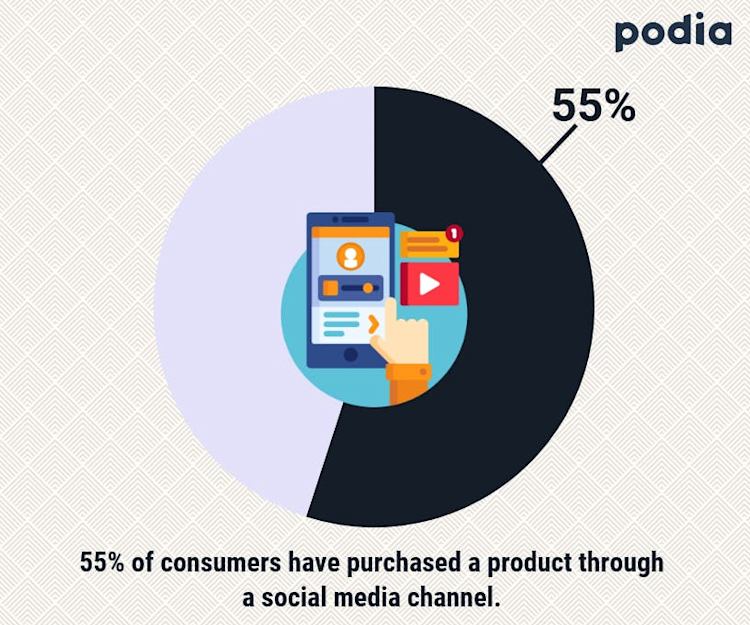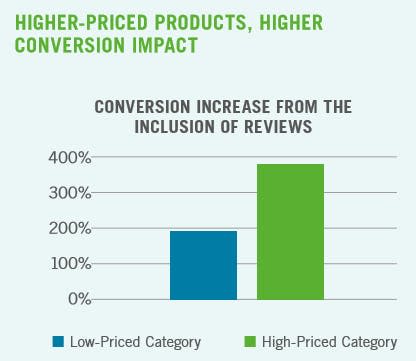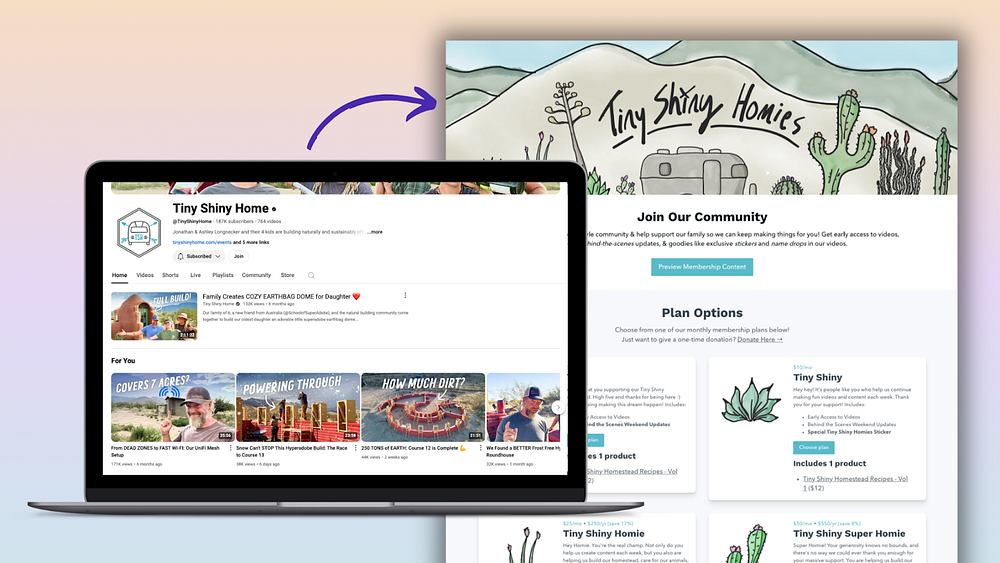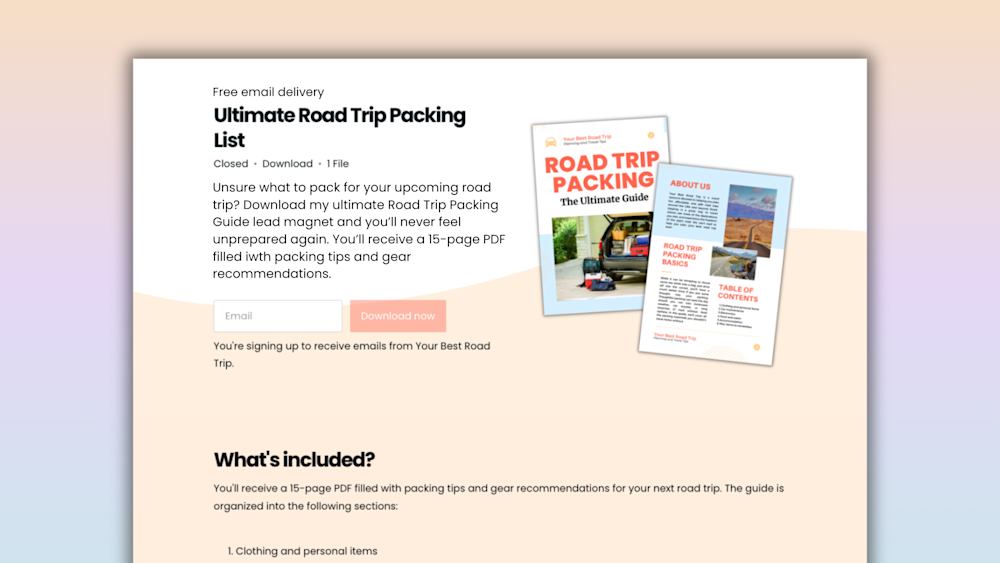You’ve tried email marketing.
You’ve dabbled in social media and even put up a few blog posts.
You’re willing to do anything that’ll work, so what gives?
Why are your profits stagnating no matter how must hustle you put into them? Why are so many “tried-and-true” marketing strategies just not doing it for you?
I hate to be the one to break it to you, but it’s probably you.
You can’t keep piling your marketing campaigns on top of each other.
Marketing -- the kind that works -- isn’t al-a-carte. You have to pick a handful of strategies, and then like a good Netflix weekend binge, commit to them from start to finish.
Now, here’s the good news: it’s not just you.
It’s normal to struggle with marketing and feel like you’re not doing enough -- even among experienced entrepreneurs. The best, most time-tested strategies out there can be a grind even when they’re flawless.
You need to have faith in the process, and that’s what we’re going to help with today.
We asked several successful entrepreneurs how they market their digital product business, and this is what they said.
Method #1: Experiment with marketing strategies
The best way to figure out how to market your business is by experimenting with different marketing strategies until you find a winning combination.
That’s what Reuven Lerner, an entrepreneur who’s worked with Apple, IBM, and PayPal, says.
Despite Reuven’s professional success, he didn’t have the perfect marketing strategy when he started creating online courses. It took time to find what worked -- and what didn’t -- for his audience.
The key element, according to Reuven, was experimentation:
“Experiment! It's hard to know how to market online, and every group of potential customers is a bit different. So you'll have to experiment to find out what's effective (and what isn't).
I've found that posting to my blog, and then getting blog posts repeated and re-posted by others, and then having an opt-in widget on my blog, is a great way to go.
I've bought advertising on Facebook, Quora, and Reddit, but with very limited results. I've started a YouTube channel and started posting content there with some decent results, as well.
With everything you do, consider, measure, and then modify your techniques to improve them. There's no one magic bullet here!”
Reuven’s advice is spot on. With so many options at your fingertips, you should take time to investigate what works best for you.
That being said, don’t blindly select tactics. As David Cain of Camp Calm suggests, look toward successful business owners for marketing inspiration.
“Whatever it is you want to do -- blogging, creating products, building a list -- start by emulating the people who do it well,” David said.
“Everything you need to do has been done by many people already, and you can see how they did it on their websites. That might sound really obvious, but emulate the successful.
I think a lot of us waste a lot of time re-inventing the wheel, thinking we need to do everything in an epic, unique way. The beauty of the internet is that abundant examples of everything you need to get right are at your fingertips.”
So just what time-tested methods should you experiment with?
Here are a few to get you started:
#1. Influencer marketing
You could try influencer marketing, especially working with micro-influencers.
Micro-influencers are usually more cost-effective and accessible than mega influencers.
Besides being cost-effective, micro-influencers tend to have engaged audiences who are interested in products the influencer recommends.
To complement influencer outreach, you could encourage recommendations from your followers as well.
We’ll cover word-of-mouth marketing shortly, but suffice to say, asking for customer recommendations is a powerful and easy-to-implement marketing method.
As is our next method, social media marketing.
#2. Social media marketing
Being active on social media is a simple way to bond with your customers and promote your business, too. This guide to how to use social media to sell digital products can point you in the right direction.
55% of consumers have made purchases through social media, while 76% of American consumers said they purchased a product they saw in a brand’s social media post.

Of course, the challenge with social media marketing is that your posts have to be seen to work — which is where the third strategy comes into play.
#3. Paid advertisements
You can use paid ads to complement your social media marketing efforts or as a standalone strategy. While ad prices can vary significantly, they can be a high-ROI way to drive traffic and sales.
Millennial Boss, as an example, used Pinterest ads to get 100,000 page views in a thirty-day period.
If Facebook is more your (or, more importantly, your audience’s) speed, you can get the nitty-gritty on using ads in our previous article about how to use Facebook ads to sell online courses.
For paid search ads, this rundown on PPC ads from Econsultancy may be just the ticket for you.
But what if you’re looking for something you can experiment with that doesn’t require a chunk of change -- or more -- to start?
Then our final experiment-worthy strategy is a perfect addition to your arsenal.
#4. Email marketing
Don’t overlook the marketing potential in your email list, even if you have just a few subscribers.
Reuven Lerner used to ignore the advice to create an email list but now credits his list as being the "backbone" of his online sales.
Email is also one of the most important marketing tools Sef Chang of House of Royalties uses, too.
In Sef’s words, “Having a large social following? Sure, that's cool. Having a lot of YouTube subscribers? Great.
But the platform I focus on when it comes to marketing is email.
With email funnels and sequences, I think there's huge value because that is just one step closer for them telling me that they are really interested in the stuff that I have to offer or give.”
To start developing a robust email marketing strategy like Reuven and Sef’s, check out this step-by-step breakdown on how to build an email list with zero subscribers and how to write better sales emails.
#5. Bonus tip: Experiment with empathy at the forefront
Before we close out our advice for experimentation, there’s one more caveat to make here: lead with empathy.
Lead with empathy and while your experiments may still flop, they’re guaranteed to teach you something new about your audience. Lead without it, on the other hand, and your experiments won’t help anyone -- not your customers or your business.
Speaking of helping your customers and business, our next major tenet of selling online products takes the work and stress off both your plates.
And skipping it could leave some serious cash on the table.
Method #2: Create a sales funnel with multiple touchpoints
A sales funnel is the path a company creates for potential customers to follow, so they’ll become paying customers.
Businesses should create a marketing sales funnel (or several) since customers rarely have orderly buying journeys.
Instead, they often have multiple touchpoints with your brand before deciding to make a purchase. Common touchpoints include your website, social media, and customer service team/channel.
A sales funnel can help you keep potential customers interested and on the path toward making a purchase, no matter how many detours they have over their journey.
Because your products likely appeal to different groups, you’ll want to create sales funnels for each segment of your audience using marketing tools like email, paid ads, and live chat.
Take creator Alaric Ong as an example. He attracted around 600 students and saw over $500,000 in course sales within the first 12 months of his business.
Part of Alaric’s success came from using a sales funnel.
According to Alaric, “My main method of getting customers is through doing live, in-person seminars to sell them my online course.
I run Facebook ads to channel people to a live event and provide value to them, then offer them the online course.”
Having multiple touchpoints can take time to set up, but it’s time well-spent. Your touchpoints can help you attract, guide, and keep more people in your sales funnel.
Multiple channels can boost engagement rates, too, which may lead to future sales.
OK, so you’re on board that multiple touchpoints are a good thing, but where should you start adding those touchpoints?
Spoiler: In many of the same places where you’d start experimenting.
Touchpoint #1: Paid search and social media ads
You can start creating a sales funnel by using paid search and social media ads. Paid ads use data to help you target customers at all stages of the funnel.
As an example, this Google ad for Amwell would be good for top-of-the-funnel customers since it introduces the benefits of their service in just a few lines.
This Soylent ad would be great for customers close to making a purchasing decision since it encourages them to buy Soylent to find out what it tastes like.
As with paid ads, email can and should be used to help customers at all stages of the sales funnel, as well.
Touchpoint #2: Email
Different emails work for different stages of the sales funnel.
Sounds obvious enough, right?
Not quite. The differences can be subtle, and the results of those differences can be anything but subtle. Let’s check out some examples:
Food52’s email would be suitable for awareness-stage visitors since it introduces how the new subscriber can participate in and benefit from their community.
CoSchedule’s email, on the other hand, would be better for consideration- and decision-stage customers since it offers them information that could nudge them towards making a purchase.
Harry’s email also makes for a fabulous middle-of-the-funnel email.
Their email is notable for two reasons. Firstly, it surprises visitors with a short tutorial instead of more traditional marketing messages.
Secondly, it subtly promotes their products as a way to achieve a smooth shave.

As for bottom-of-the-funnel emails, both TunnelBear and Casper’s emails are standout examples.
TunnelBear’s email could convince long-time subscribers to make a purchase because of its steep and exclusive discount.
An abandoned cart email like Casper’s could encourage more would-be customers to convert, too.
Of course, while email is a major part of a sales funnel, it’s not the only touchpoint you need to incorporate.
To drum up that email list in the first place, you need a touchpoint where people can sign up for your list -- and few places make better touchpoints for that than landing pages and lead magnets.
(And guess what? You can build landing pages, lead magnets, and your email list all in Podia. Get started for free with a 30-day trial.)
Touchpoint #3: Lead magnets and landing pages
To complement your paid ads and emails in your sales funnel, consider adding lead magnets and landing pages.
Visitors are often taken to landing pages after clicking on an ad or social media link.
Landing pages are like a “gate” customers pass through to enter the consideration stage of your sales funnel.
In most cases, landing pages are used to get visitors to join your mailing list, as you see below in this marketing-famous example from Backlinko.
Landing pages can also be used for free trials and pre-orders.
Regardless of their purpose, every landing page needs something to convince people to sign up for. That’s where lead magnets excel.
Keeping with the same example as above, here’s a snapshot of a lead magnet Backlinko offers on its landing page:
Lead magnets can be much more than case studies, however. They can be ebooks, email courses, mini video courses, checklists, and pretty much any other content imaginable.
Lead magnets can help you segment your list according to subscribers’ interests, goals, and more. You then use this information to send more appropriate marketing messages.
You don’t have to hire a website designer to create a landing page for you -- you can easily use any of these top landing page builders or build one in minutes using the Podia Editor.
Looking for a way to level up your sales funnel even further? You can amplify the power of your paid ads, landing pages, lead magnets, and email with other marketing tools like social media posts and blogging, too.
But none of those tactics will pay off in spades if you’re missing the magic ingredient they all run on: your audience’s loyalty. Fortunately, our successful creators have some advice there, too.
Method #3: Earn your audience’s loyalty by being an authentic brand
To earn your audience’s trust, loyalty, and sales, keep your brand authentic.
One of the best ways to earn your audience’s trust is by being yourself.
Minessa Konecky of Direct to Success recommends creators “Stop trying to pretend to be who you think your customers want you to be.
We crave authenticity, and when we buy from a boutique business owner, we aren’t just buying a product, we’re buying a point of view.
If your prospects don’t know who you are or what you stand for, no amount of photoshopped photos and perfectly crafted posts will convert them.
This gives you enormous freedom to be yourself, warts and all. They’ll love you for it.”
Minessa is right -- being authentic is great for business. Sadly, few brands use their authentic selves to connect with customers.
So how can small businesses win over customers when time and finances aren’t on their side?
Start by using language that resonates with your target audience but is also uniquely your own.
As Katie Orr recommends, “Be yourself. People can spot a fake.
Find your niche and your unique voice within it. No one can say what needs to be said exactly the way you can.”
To that end, ensure your brand’s voice -- the language you use on your website, promotional materials, social media, and more -- is consistent and true to you.
Lianna Patch of Punchline Copy uses clever and bold copy to showcase her personality and make her talents as a copywriter shine.
Likewise, Wendy’s uses humor and a little cheek to stand apart from other fast-food brands.

Though it can feel peculiar to use a brand voice that deviates from the status quo, it can make your business more relatable and likable.
You could also take stances on issues important to your customers and use your business to benefit those causes.
Take Patagonia as an example. Patagonia is renowned for their commitment to environmental and social responsibility.
One way they promote and follow these values is through their Worn Wear program, where customers can trade-in and purchase used Patagonia clothing.
Though you may polarize some of your audience by taking a stance, it can often make those who agree with you that much more dedicated to your business.
As Min Liu of Art of Verbal War learned, you need to be bold to stand out from the crowd.
When his business was starting out, Min wanted to be “as low key as possible”.
But according to Min, “What I’ve realized over time is that in order to succeed in business, you have to be committed to the very difficult job of gaining and keeping people’s attention.
Getting attention, however, requires you to put yourself out there. More importantly, what it requires is for you to do things that people may not expect.
When you do any of these things, they won’t always go smoothly or the way you prefer.
But, these are the things that almost never fail to get attention. My advice to you is to study how successful people get attention and use their techniques for yourself.
Get comfortable with the discomfort that comes with doing these things, and you will reap the rewards.”
This is the gist of it:
Successful businesses don’t follow the status quo -- they connect with their audiences by standing up for causes they believe in and being authentically themselves.
While being authentic can take some practice, it’s an under appreciated, highly cost-effective way to win customers.
OK. The final marketing tactic for today takes time to achieve but can be the icing on the promotional cake: word-of-mouth.
Method #4: Encourage word of mouth marketing from the start
One way to get customers talking is by offering incentives through an affiliate or referral system.
That’s something John Burdock of Epic J Creations learned through selling his courses, explaining that, “Having affiliates to help market and sell your product is a very important piece in having a successful amount of sales.”
Podia has affiliates built in to the Shaker plan, so it's easy to incentivize happy customers to promote your work. You can set whatever commission structure you want, apply it to all products or just some, and make your program invite only or open to all.
Aside from promoting your product as an affiliate, you can encourage customers to leave online reviews, too.
Online reviews can give your brand a major reputation and sales boost. You can also use them to create sales page testimonials which can do wonders for your sales.
One report found that displaying product reviews for a low-priced product increased conversions by 190%. For high-priced products, the conversion rate increased by 380%.

Even if your business has a small customer base, encouraging word-of-mouth can attract customers more affordably and efficiently than by using traditional marketing methods alone.
Although word-of-mouth marketing takes time to take effect, it’s a return on investment certainly worth waiting for and investing in.
Anything that promotes your dream is, right?
Use these 4 power-packed tips for marketing your online business
Marketing a business requires equal parts creativity, strategy, and audacity.
With these tips you’ll be that much closer to creating a marketing strategy that wows your audience and grows your sales.
Although our creators shared mountains of advice, four core takeaways are:
-
Experiment with different marketing methods until you find a combination that works for you. At the same time, don’t start your strategy from scratch -- use your favorite brands’ marketing strategies as a springboard for your approach.
-
Build a sales funnel so you can have processes in place to attract, retain, and convert more customers.
-
Be authentic with your customers. It’ll gain you their loyalty and trust and distinguish you from other brands.
-
Encourage word-of-mouth marketing so you can get more referrals to your business.
With so many new marketing ideas to think about, it's no wonder so many creators go with an all-in-one solution like Podia. Podia has your website, blog, digital products, courses, email list, sales funnels, and affiliates all under one roof. Try Podia for free for 30 days, and see how easy it is to build and share your work!
Happy experimenting, and remember: you’ll miss 100% of the shots you don’t take. The shots you do, on the other hand? Those can turn into game-changers.



